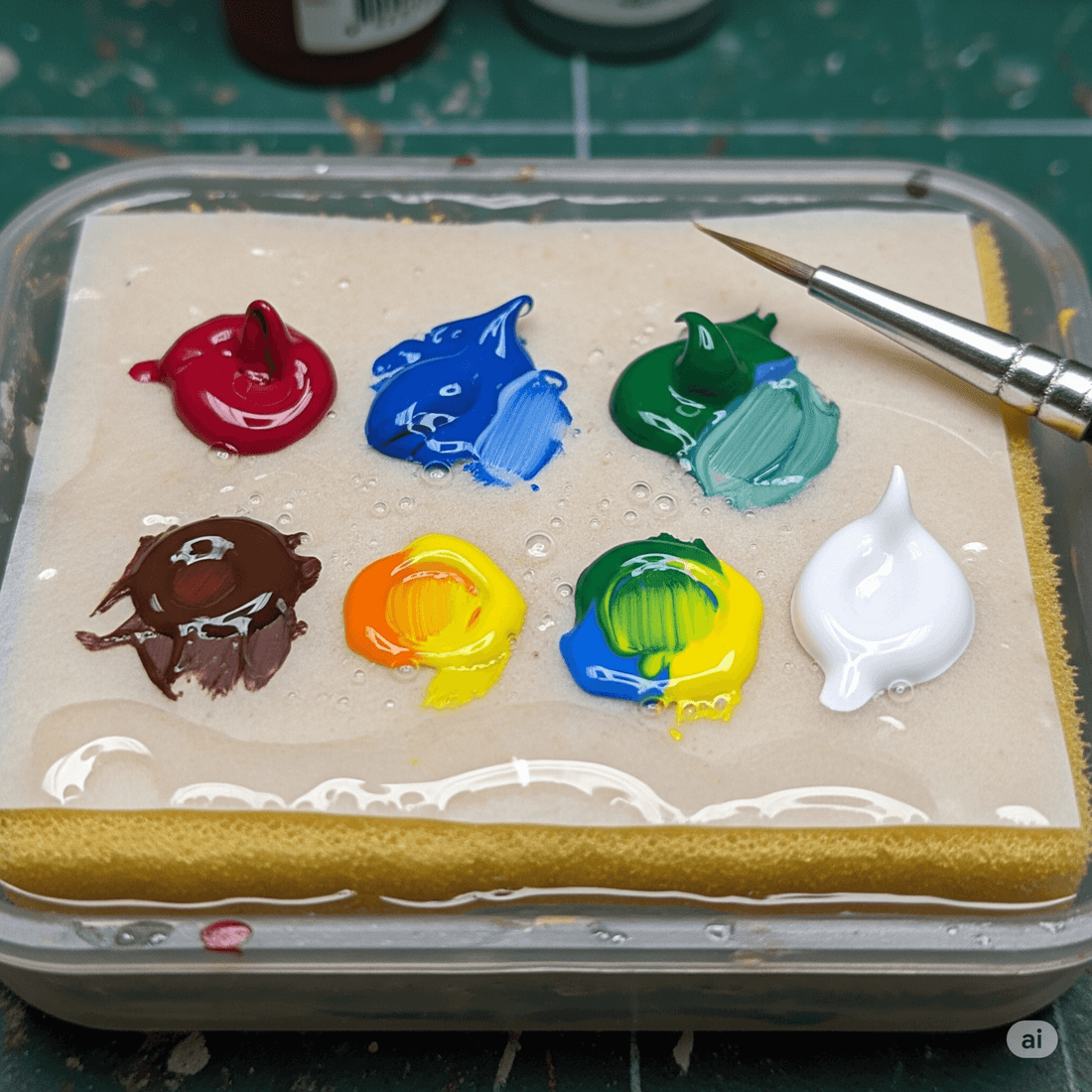
The Magic Behind Your Miniatures: What Exactly is Acrylic Paint?
Hey there, fellow miniature enthusiasts!
Ever wondered about the colorful potions we dab onto our tiny armies and heroes? We spend hours layering, shading, and highlighting with it, but have you ever stopped to think, "What is acrylic paint, really?"
As the go-to paint for miniature painters, understanding its composition can give you a better grasp of how to use it effectively, especially when it comes to thinning, layering, and getting that perfect smooth finish. Many of us here in Australia reach for reliable brands like Vallejo and Monument Hobbies for our projects, and knowing what makes their paints tick can truly elevate your craft.
The Anatomy of Acrylic Paint
At its core, acrylic paint is a simple but brilliant mixture of three key ingredients:
- Pigment: This is the heart of the color. Pigments are finely ground powders, either natural (like minerals) or synthetic (man-made chemicals), that give the paint its specific hue. Think of titanium dioxide for bright whites or carbon black for, well, black. The quality and fineness of the pigment are what make a good paint good. Higher quality paints often boast densely packed and finely-milled pigments, resulting in richer, more vibrant colours that cover beautifully, which you'll notice in their extensive ranges.
- Binder: This is the glue that holds everything together. For acrylics, the binder is a synthetic polymer resin (specifically, an acrylic polymer emulsion). When you squeeze paint from the pot, it's this milky-white binder that encapsulates the pigment particles. As the paint dries, the water evaporates, and the tiny polymer spheres fuse together, forming a tough, clear, and flexible plastic film. This is why a dried acrylic paint chip feels like plastic! The specific formulation of the binder can vary between brands, influencing things like adhesion and flexibility on your miniatures.
- Vehicle: This is the liquid that carries the pigment and binder. In our case, for water-based acrylics, the vehicle is water. The water keeps the paint in a liquid state, making it workable. As the paint dries, the water evaporates, allowing the binder to do its job. This is why you can thin your paints with water and clean your brushes with it—until the paint dries, of course! The consistency straight from the dropper bottle is largely determined by the ratio of vehicle to pigment and binder.
Why Acrylics are Perfect for Miniature Painting
Now that we know what's in the pot, let's explore why this combination is a miniature painter's best friend:
- Fast Drying Time: The water-based vehicle means acrylics dry relatively quickly. This is a double-edged sword, but for layering and getting multiple coats on in a single session, it's invaluable. It allows you to build up color and texture without waiting for hours. Brands like Vallejo and Monument Hobbies offer a variety of formulations that balance drying time with workability, catering to different painting styles.
- Water Solubility (when wet): This is the magic ingredient for cleaning up. A little water is all you need to thin your paints for smooth glazes or to wash your brushes. No harsh chemicals or fumes! Whether you're using Vallejo Model Colour or Monument Hobbies Pro Acryl, easy water cleanup is a major advantage.
- Durability (when dry): Once the water evaporates and the polymer binder cures, the paint forms a durable, water-resistant plastic film. This is crucial for models that will be handled during gaming. A well-painted and varnished miniature can withstand a surprising amount of tabletop action. The quality of the binder in miniature paints contributes significantly to this durability.
- Versatility: Acrylics can be used in a huge variety of ways. You can thin them down for transparent glazes, use them straight from the pot for a thick, opaque coat, or mix them with mediums to change their properties—from adding texture to slowing down the drying time.
A Quick Word on Acrylic Mediums
You'll often hear us talk about "mediums." These are basically the binder and vehicle without the pigment. They allow you to change the paint's properties without affecting the color.
- Gloss/Matte Mediums: These change the final finish of your paint.
- Flow Improver: This breaks the surface tension of the water, making the paint flow more smoothly and reducing brush strokes. Products like Vallejo's Flow Improver are essential for smooth blending and layering.
- Retarder: This slows down the drying time, giving you more time to blend. Consider Vallejo's Retarder Medium if you find your paints drying too quickly, especially in our Aussie climate.
So the next time you pick up a dropper bottle of acrylic paint, you'll know you're not just holding a colored liquid. You're holding a carefully engineered mix of pigments, polymers, and water - a tiny bit of chemistry that makes our hobby so vibrant and rewarding.
Happy painting!
